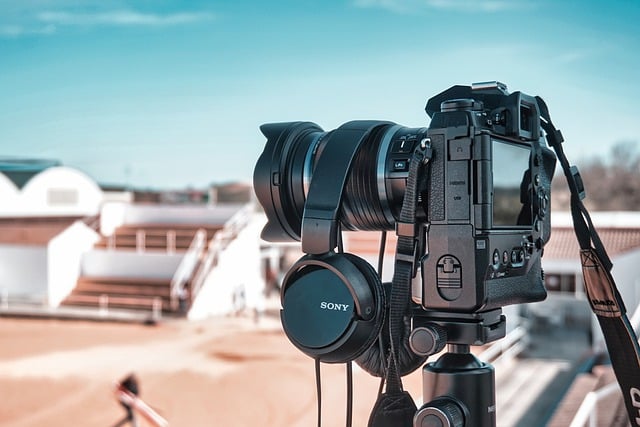Converting DivX to MOV format offers versatility, compatibility, and optimal video quality for multimedia sharing, especially on Apple devices. Efficient encoding tools like handBrake and FFmpeg enable fast, precise conversions while preserving original video integrity, subtitles, and audio tracks. Best practices include using compatible software, selecting supported codecs, and optimizing output settings based on playback devices to achieve successful conversions tailored to diverse platforms.
Efficiently converting videos between formats is crucial, especially with popular codecs like DivX and MOV. This article delves into the intricacies of these formats, highlighting why optimal encoding/decoding is essential for smooth multimedia experiences. We explore challenges associated with direct conversion and present optimized solutions, including recommended tools and best practices. Learn how to seamlessly convert DivX to MOV with efficiency and quality intact.
Understanding DivX and MOV Formats

DivX and MOV are two popular video formats, each with its own strengths and use cases. DivX, short for DivX Corporation’s Decoder/Encoder, is a high-quality video compression standard known for its efficient encoding capabilities. It offers excellent video quality while maintaining smaller file sizes, making it ideal for streaming and online distribution. On the other hand, MOV (or QuickTime) is an Apple-developed format that supports various multimedia data types, including video, audio, and images. It’s widely used in professional video editing due to its versatility and compatibility with many software applications.
Converting DivX to MOV can be beneficial for users who want to ensure cross-platform compatibility or take advantage of MOV’s advanced editing features. This process allows for easy sharing and playback on different devices, especially those that primarily support Apple formats. With the right conversion tools, you can preserve video quality while transitioning between these two popular video containers.
Why Efficient Encoding/Decoding Matters

Efficient video encoding and decoding are vital for several reasons, especially in today’s digital landscape where multimedia content is ubiquitous. When videos are encoded efficiently, it ensures faster processing times without compromising quality. This is particularly beneficial for users who require quick conversions, such as converting DivX to MOV format, enabling seamless playback on various devices and platforms.
For online streaming services and content creators, efficient encoding reduces the amount of bandwidth required to transmit videos, which can significantly enhance video delivery speed and improve overall user experience. Moreover, it plays a crucial role in optimizing storage space, allowing for more content to be stored and accessed efficiently, whether on personal devices or cloud servers.
Challenges with Direct Conversion

Direct conversion methods for encoding and decoding videos, while seemingly straightforward, come with their share of challenges. One significant hurdle is compatibility issues, especially when dealing with older formats like DivX and aiming to convert them to more universally accepted formats such as MOV. Direct conversion often struggles with preserving the original quality and metadata, resulting in degraded video and audio quality upon playback.
Another challenge lies in handling complex compression algorithms used by DivX. These algorithms are designed to optimize file size without sacrificing too much quality, but they can be intricate and difficult to accurately replicate during the conversion process. This often leads to larger file sizes for MOV compared to the original DivX, defeating the purpose of efficient encoding.
Optimized Solutions for Converting DivX to MOV

Converting DivX to MOV format has become a common requirement for many users, especially those working with multimedia content. Optimized solutions are essential to ensure efficient and high-quality conversions. The good news is that there are several reliable tools available that specialize in handling such tasks seamlessly. These tools employ advanced algorithms and codecs to preserve the original video quality while compressing it into the MOV container format.
One of the key advantages of these optimized converters is their speed and precision. They can handle complex video structures, including subtitles, audio tracks, and special effects, without losing any data. This makes them ideal for professionals who need to convert videos for various platforms and devices. With user-friendly interfaces and robust features, converting DivX to MOV has never been easier or more accessible.
Tools and Software Recommendations

When it comes to efficiently encoding and decoding videos, there are several powerful tools and software options available. For instance, handBrake is a popular choice that supports various formats, including converting DivX to MOV, while maintaining excellent video quality. Its open-source nature and user-friendly interface make it accessible for both beginners and advanced users.
Another notable recommendation is FFmpeg, a versatile command-line tool capable of handling complex video tasks. It offers extensive format support and provides precise control over the encoding process. Whether you’re looking to optimize video size, adjust resolution, or apply specific filters, FFmpeg has got you covered. Its robust features make it ideal for professionals who need to manage a wide range of video formats efficiently.
Best Practices for Seamless Conversions

When converting DivX to MOV, adhering to best practices ensures a seamless process and optimal video quality. First, use compatible conversion software capable of handling both formats efficiently. This guarantees that the video data is accurately translated without loss or distortion. Second, ensure proper codec selection; choose codecs supported by both DivX and MOV to avoid compatibility issues.
Additionally, optimize the output settings for your desired playback device. Adjusting parameters like resolution, frame rate, and bit rate can significantly impact file size and viewing experience. For instance, reducing the bit rate may decrease file size but could also lower video quality. Finding the right balance ensures a smooth conversion that meets your specific requirements.
Converting DivX to MOV can significantly enhance video accessibility and compatibility. As understood from this article, efficient encoding and decoding are crucial for seamless transitions between these formats. By navigating challenges like direct conversion issues and leveraging optimized solutions, users can ensure high-quality outcomes. Recommended tools and best practices further solidify a straightforward process, making it easier than ever to convert DivX videos to MOV with minimal hassle.
